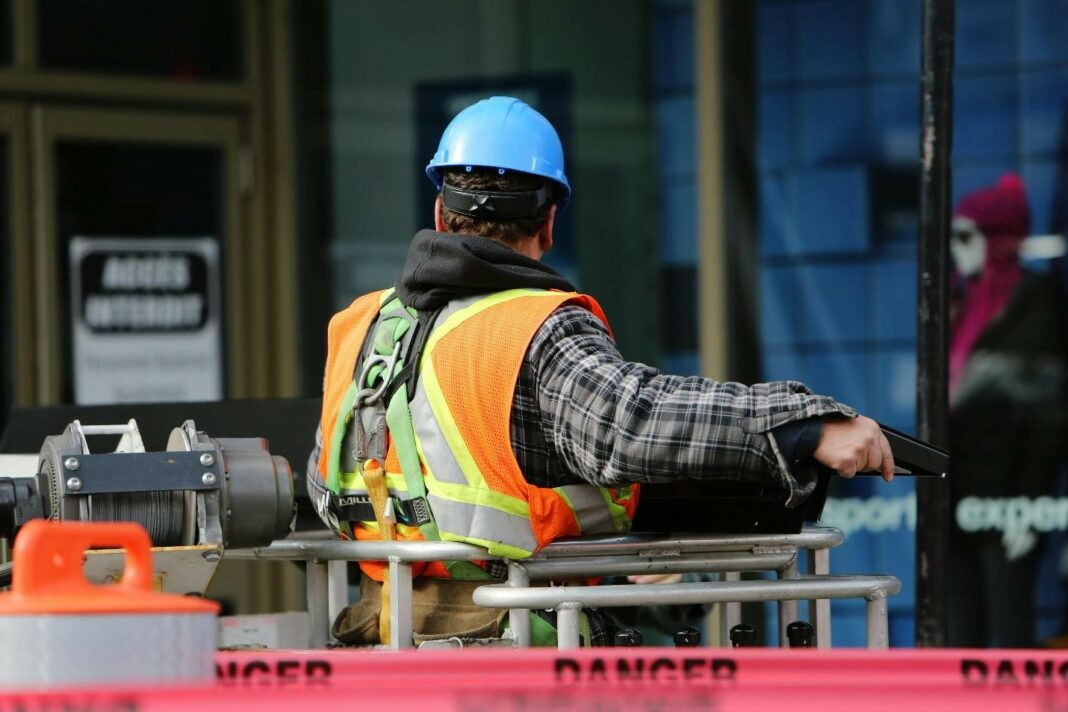A personal fall arrest system (PFAS) is a crucial component of any workplace’s fall protection safety program. Tailored for use when other types of fall protection are not feasible or practical, a PFAS is meant to prevent a person from hitting a lower floor level or other objects in case of a fall.
The three major components of a personal fall arrest system are a full-body harness, an anchorage, and a connecting device in addition to a rescue plan after the fall. Each feature ought to be in the correct position and be secured properly to better protect workers.
In this article, we go into the details of a complete fall arrest system.
Full Body Harness
Commonly known as a safety harness, a full-body harness is the primary and wearable component of a personal fall arrest system. It is what connects the wearer to the anchorage point, preventing them from falling. Fall protection safety harnesses distribute the impact of a fall across the waist, thighs, pelvis, chest, and shoulders to ensure the wearer is not hurt when stopping a fall.
Here are the requirements for a full-body harness:
- Must equally distribute force throughout the body
- Should ensure the wearer assumes an upright position after a fall
- Must limit maximum arresting force to 1,800 lbs.
- Must have a keeper to keep the ends of dangling straps under control.
Connecting Device (Lanyard or Lifeline)
The second component of a personal fall arrest system is the connecting means. This is what determines how long the worker’s potential fall will be and is designed to attach to the anchorage point and full body harness. The two main types of connecting means are the self-retracting lifeline and a lanyard. Each is suited for different circumstances. For instance, if it is likely that a roofing worker may encounter obstructions during a fall, they need to utilize a self-retracting lifeline to lessen the fall distance.
All connecting means should meet the requirements below:
- Must be the correct length according to the calculated fall distance.
- Must lessen arresting forces to less than 1,800 lbs.
- Should be connected to the full-body harness and anchor using buckles, carabiners, D-rings, and snap hooks.
- Must be matched in size and proportion, with the gates capable of withstanding 3,600 lbs. minimum load.
Let us take a closer look at the two types of connecting devices:
Lanyard
This is a short flexible line of rope or webbing strap with connectors at each end. To one end, a lanyard is connected to a full body harness and to the other end, it is attached to a shock absorber, deceleration device or anchorage point. Most lanyards come with a shock absorber tailored to reduce the force exerted on the wearer during a fall.
Self-Retracting Lifeline
A self-retracting lifeline functions the same way as a lanyard, linking the wearer’s safety harness to an anchorage point. The only difference is that instead of hanging freely, it retracts automatically into the unit housing and must limit the worker’s free-fall distance to two feet at most.
Anchorage Point
The anchorage point is the third component of a personal fall arrest system. This is what holds the wearer during and after a fall and is usually attached to the structure on which work is being done. Anchorage points are typically made of steel and any washers and bolts should be thoroughly scrutinized for their load-bearing capabilities.
An anchorage point must meet the following requirements:
- Must have a minimum tensile strength of 5,000 lbs. per individual attached
- Must meet specific design and installation requirements to withstand the intended load
- Should be at a height that will not allow a fall bigger than six feet
- Must be able to minimize swing fall hazards.
Rescue Plan
While the above three components form the foundation of a fall arrest system, a thorough rescue plan should also be in place. In the event of a fall, swift rescue is crucial to prevent the risk of suspension trauma. This is a potentially fatal condition resulting from prolonged hanging in a harness. A comprehensive rescue plan should outline procedures for assessing the situation, calling for assistance and successfully executing a safe rescue operation.


